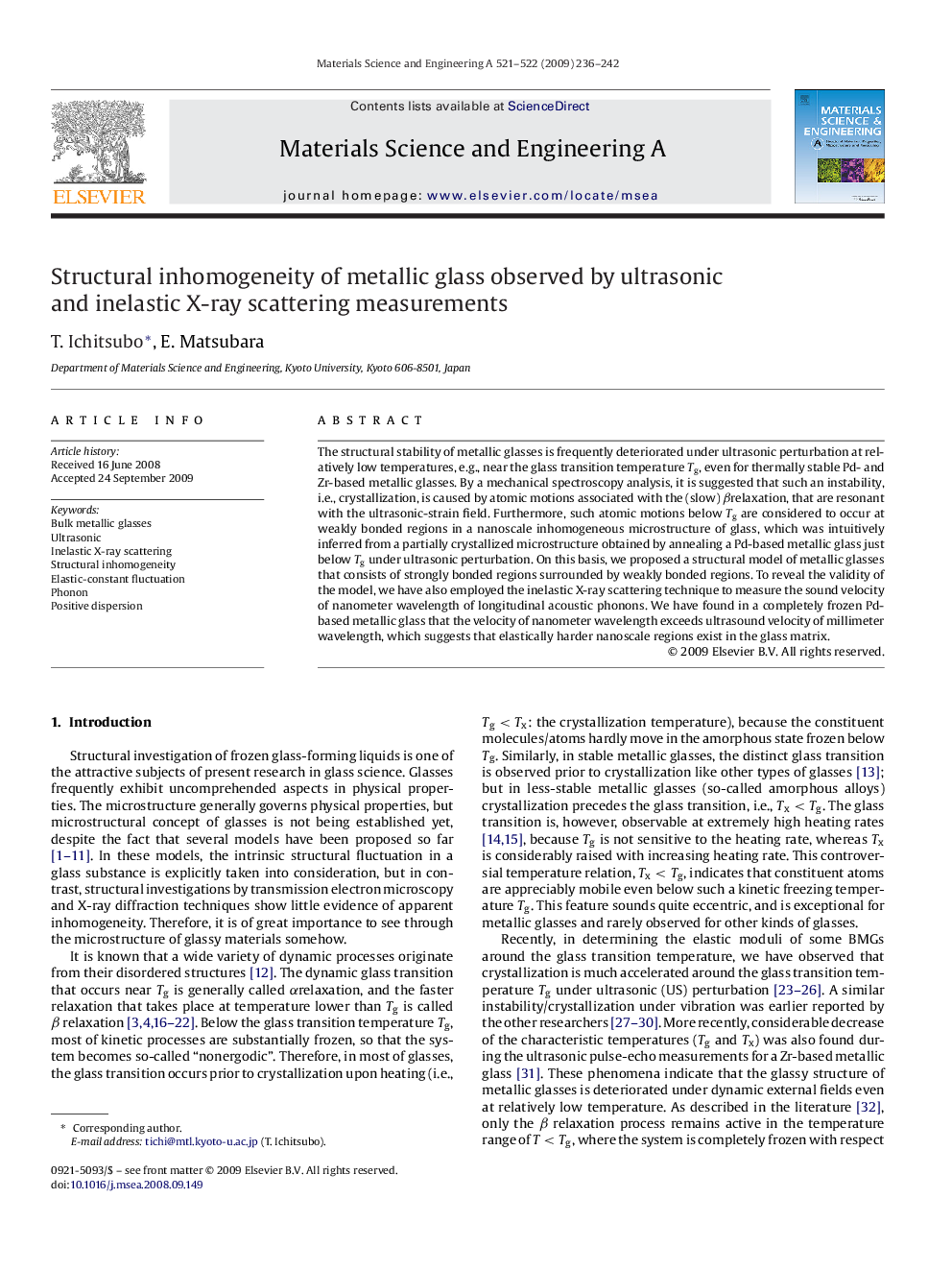| Article ID | Journal | Published Year | Pages | File Type |
|---|---|---|---|---|
| 1580086 | Materials Science and Engineering: A | 2009 | 7 Pages |
Abstract
The structural stability of metallic glasses is frequently deteriorated under ultrasonic perturbation at relatively low temperatures, e.g., near the glass transition temperature Tg, even for thermally stable Pd- and Zr-based metallic glasses. By a mechanical spectroscopy analysis, it is suggested that such an instability, i.e., crystallization, is caused by atomic motions associated with the (slow) βrelaxation, that are resonant with the ultrasonic-strain field. Furthermore, such atomic motions below Tg are considered to occur at weakly bonded regions in a nanoscale inhomogeneous microstructure of glass, which was intuitively inferred from a partially crystallized microstructure obtained by annealing a Pd-based metallic glass just below Tg under ultrasonic perturbation. On this basis, we proposed a structural model of metallic glasses that consists of strongly bonded regions surrounded by weakly bonded regions. To reveal the validity of the model, we have also employed the inelastic X-ray scattering technique to measure the sound velocity of nanometer wavelength of longitudinal acoustic phonons. We have found in a completely frozen Pd-based metallic glass that the velocity of nanometer wavelength exceeds ultrasound velocity of millimeter wavelength, which suggests that elastically harder nanoscale regions exist in the glass matrix.
Related Topics
Physical Sciences and Engineering
Materials Science
Materials Science (General)
Authors
T. Ichitsubo, E. Matsubara,
